Barn Again
January 19, 2012
Text by Regina Cole Photography by Interior Photography by Michael Partenio, Exterior Photography by Michael Moran Produced by Stacy Kunstel
When architect Reese Owens asked the new owners of a poetically beautiful piece of land in western Connecticut what kind of a house they wanted to build on the site, they requested “something special, something that fits the land.”
Owens, of Halper Owens Architects in Greenwich and Washington Depot, is known for projects that range from designing a long list of Ralph Lauren stores to restoring a prime piece of a historic downtown to individualistic private residences. To give his clients, a New York family with young children, something really special, he teamed up with builder Chris Washington of Woodbury, barn builder Edwin Cady of Roxbury and interior designer Karen Davis of nearby Washington.
The result of their collaboration received a 2009 Merit Award for Design Excellence from AIA New England. The stunning and comfortable 6,000-square-foot weekend retreat with lyrical views is actually a circa-1690–1710 Dutch barn that spent most of its life on a working farm in Sharon Springs, New York.
“Barns have such interesting typology,” Owens says. “There is no need to embellish.”
We New Englanders must agree, because we certainly seem to love barns. New England vernacular architecture’s gentle giants, they arouse elegiac passion as our rural landscape continues to give way to malls and housing developments. We make pilgrimages to superstars like the 1826 Round Stone Barn at Hancock Shaker Village in Pittsfield, Massachusetts, or Dr. William Seward and Lila Vanderbilt Webb’s medieval-inspired 1886 Farm Barn at Shelburne Farms in Shelburne, Vermont. Function, grace and beauty on such a monumental scale inspire us, all the more because barns are vanishing, albeit long after the rural life they supported.
Cady’s task was to dismantle a 300-year-old farm building he had found years earlier and rebuild it to serve as a getaway for an urban family. Barn-builder to A-list stars, historic preservationists and those who just want to live in something unique, Cady has been saving barns since 1960. His company, East Coast Barn Builders, has become the largest mover of antique post-and-beam frames in the country. He still scouts them, but finding standing old barns in salvageable condition has become increasingly hard. “If I go to see nine, I might buy two,” he says.
Cady, who grew up on Long Island, New York, and trained as a carpenter, was part of the army of builders that raised Levittown, the Long Island subdivision that was mother of all suburban housing developments. After a stint in the Marine Corps, he returned to his work, eyeing area barns that had fallen into disuse. “I saw some great old barns and tried to save them, but lost them to other buyers,” he recalls. “Then I saw that they had no idea how to take them down or put them back up.
“You have to know how to dismantle the barn; you can’t just reduce it to a pile of rubble,” he explains. “We use cranes to lift massive beams, and we meticulously inventory each part, down to the pegs. Taking it apart teaches you how it was built. Every piece gets power washed and sprayed for bugs, but that’s all. The old beams and rafters are beautiful.”
Karen Davis agrees. “The barn’s patina and the setting are inspirational,” the designer says. “The beams and rafters, along with local stone, reclaimed old flooring and gently uneven plaster walls, are beautiful elements that drove the interior design.”
Davis’s scheme pairs the house’s inherent texture with sleek, understated furnishings designed to meet the ever-changing needs of a growing family. The rooms flow into each other, the natural drama of their skeleton informing the designer’s choice of textures, tones and materials.
Davis selected interior hues that echo those outside the enormous windows, sourcing materials from local companies whenever possible. Having begun her design career on the West Coast, she has a Californian’s love for indoor-outdoor living. Her version pairs rooms with porches, their function-extending counterparts, and adds the New England necessity of screens.
Within the traditional barn form, Owens and Davis designed a black steel open-tread staircase featuring a catwalk across the entry/living room. Instead of oft-used steel cable, slender steel rods shape the horizontal balusters. “Less hardware and clutter,” Davis says.
She is uniquely equipped for a challenge that daunts many designers: creating cozy, intimate areas within a barn’s vast volume of space. “I worked my way up in the business, including working in the hospitality field,” she says. “My experience there was all about great big spaces.”
Key to the integrated, stylish decor she devised for this house is furniture that, old or new, sports uneven, patinated surfaces. In the dining room, the oak trestle table’s zinc top hints at the bumpy, scarred surface beneath. Slabs of walnut compose the living room coffee table, while a freeform cluster of wood mushroom shapes interlock to form the coffee table in the library. Even rectilinear pieces like the front hall’s elegant console table favor wood that has the softly worn look of many years’ hands.
Throughout the house, Davis echoes the black metal staircase in table stretchers and chair bases. Black steel manufactured to her design holds firewood and forms the fireplace surround.
While the front façade hints at the home’s agrarian past, the rear elevation shows a geometric composition of breezeways and screened porches. Unassuming gray tints the barn-like vertical siding; the trim, too, pays homage with barn red. But the front door reveals that the owners did not shy away from the modern, outside or in. Traditional slates lead to a fieldstone and slate entry. Instead of a barn door, however, guests enter from the shallow porch that nods to Greene and Greene through a magnificent nailhead-studded door whose flanking glass panels gracefully bow to modernism.
Barn living never looked so chic.
Architecture: Reese Owens, Halper Owens Architects
Interior Design: Karen Davis, Davis Raines Design
Builder: Chris Washington, C&L Restoration
Barn Builder: Edwin Cady, East Coast Barn Builders
Share
![NEH-Logo_Black[1] NEH-Logo_Black[1]](https://b2915716.smushcdn.com/2915716/wp-content/uploads/2022/08/NEH-Logo_Black1-300x162.jpg?lossy=1&strip=1&webp=1)











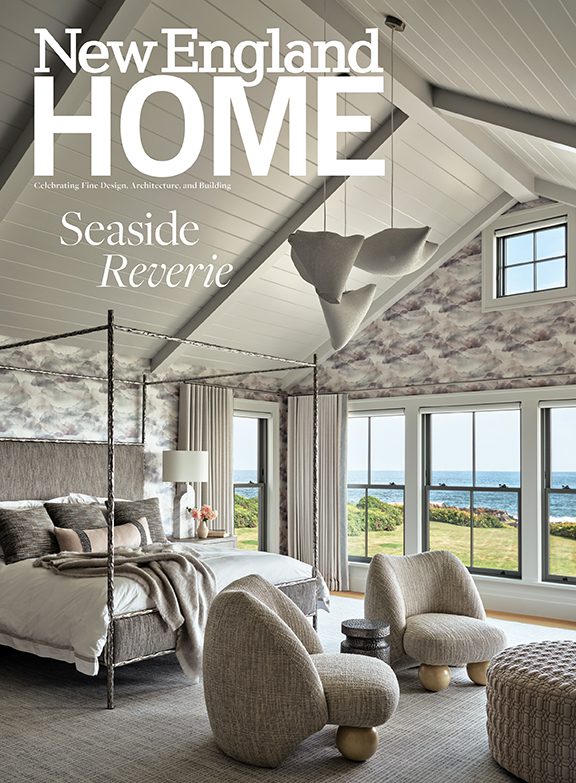
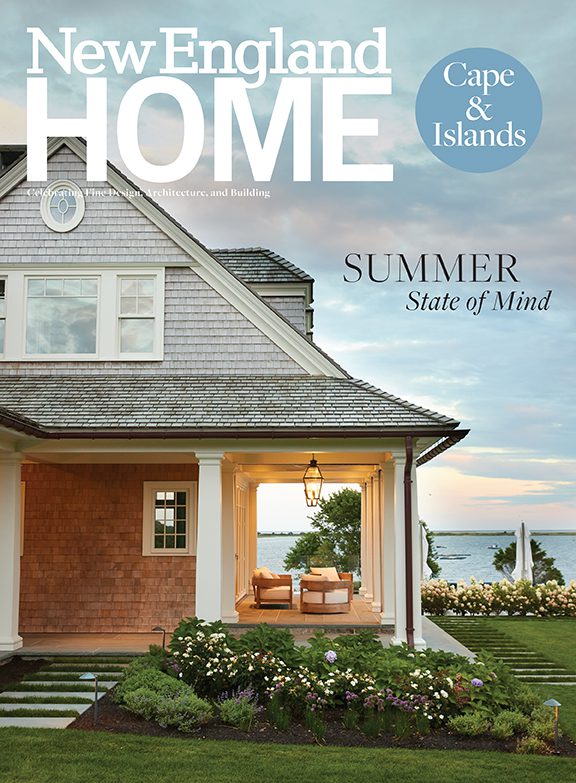
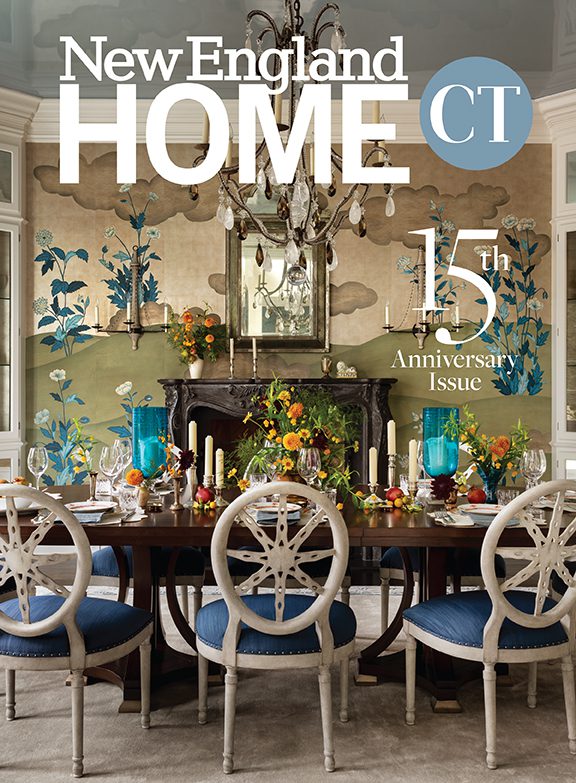
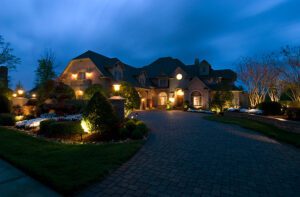

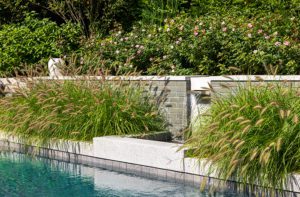

You must be logged in to post a comment.